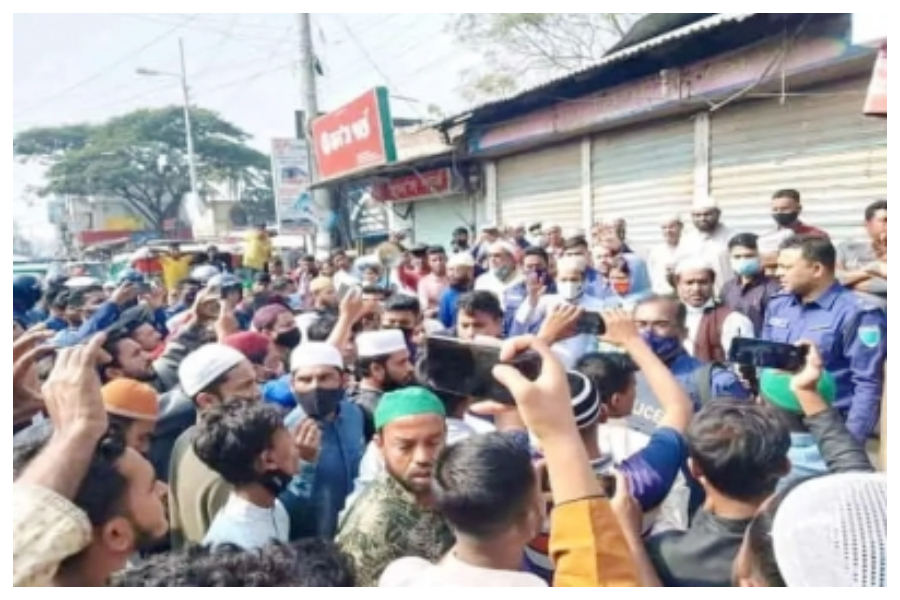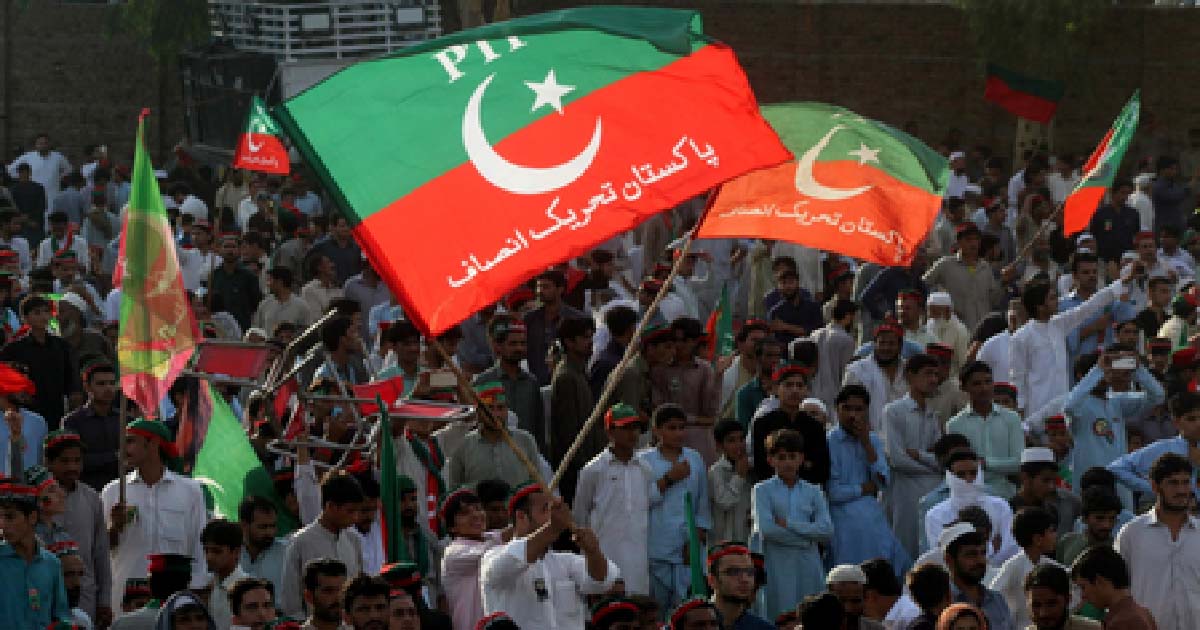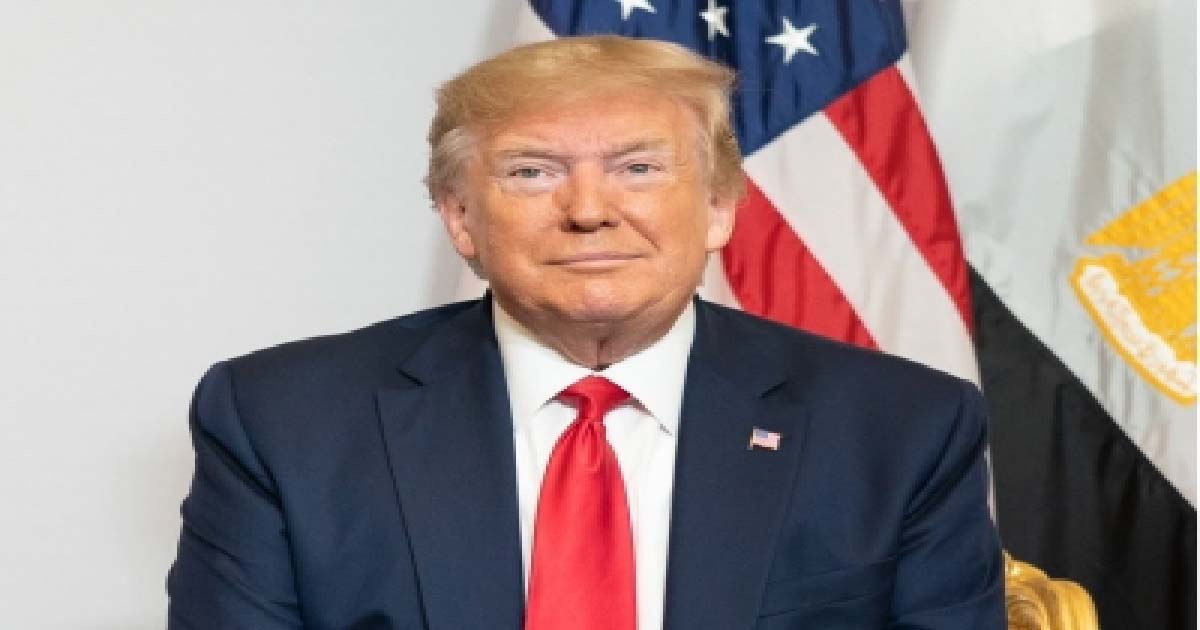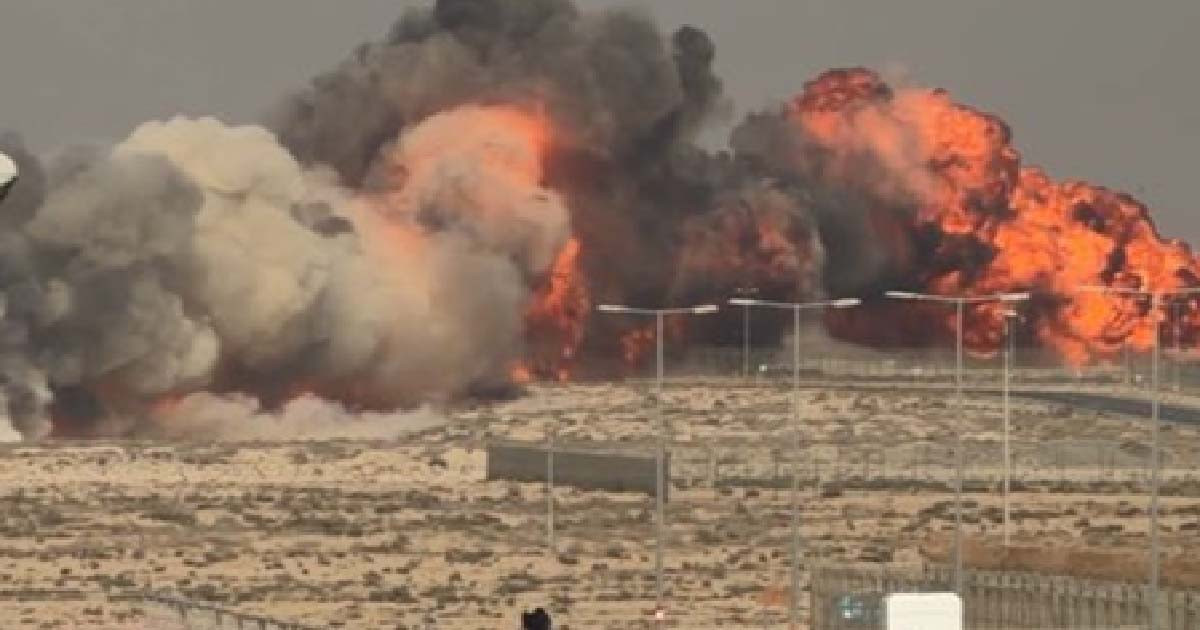International News
Sheikh Hasina’s toughest challenge-defeating the rising tide of Islamism in Bangladesh

The spurt of incidents of attacks on Hindu minority community in Bangladesh in recent times brings into focus the increasing influence of Islamists in that country despite the Hasina government’s profession of secularism and its attempt to maintain that credential. Islamism in Bangladesh is rising precipitously, permeating every aspect of life and has taken root as much in urban centres as in rural communities.
To quote a perceptive analyst: “Everywhere – from modern business office to daily social life – Islamic codes tend to exert authority. Burqa and hijab-wearing women who vow to uphold such a system are numerous, and so are men with Islamic zeal. Two decades ago, most Bangladeshis would have considered such behaviours ludicrous.”
Sufferings of the community continues since the mayhem that took place during the Durga puja in October last when Hindu properties were looted, their houses were burnt into ashes leaving four people dead and many others injured, temples were desecrated and set on fire over a contrived blasphemy issue of the copy of Holy Koran found near the image of Hindu God Hanuman. The government had to deploy para-military forces in 22 districts of Bangladesh then.
The latest incident took place on February 8 when five brothers of a Hindu family were crushed to death injuring two others of the same family by a pick-up truck in what is believed to be a ‘premeditated’ attack according to the surviving members of the family.
The incident took place in Chakaria Upazila in Cox Bazar district in the Chittagong Division of Bangladesh. ‘Hindu Lives Matter’, an organisation that has sprang up recently has reported about another incident of physical violence and forceful occupation of a clinic-cum -residence of a Hindu family outside Dhaka by a well-known film actor named Jayed Khan and his associates. Examples of such torture and harassment of Hindu families abound.
Even while the Sheikh Hasina government is mindful of the predicaments of the Hindu minority and tries to protect them from the onslaught of the Islamist communal elements, it has not really succeeded in providing the community a sense of security and fear-free atmosphere in the country resulting in migration and a slow process of dwindling of their numbers in Bangladesh. What accounts for this dichotomy of the government remaining by and large secular but the vast section of the population are communal and Islamist in their preferences? The reason lies in the very birth of Bangladesh in 1971.
While the commitments of the Awami League (AL) that brought independence to the country after a brutal oppression by the Pakistani military, and of Bangabandhu Sheikh Mujibur Rahman to a secular polity were unquestionable, they could not rid the newly emerging country of the scourge of communalism and of the poison of religion-oriented politics of the Pakistani days. The majority undoubtedly went along with the secular politics of the AL and of Bangabandhu, but there were still a major section of people from the armed forces and from the Jamaat-e-Islami, Bangladesh’s leading Islamist organization, who could not reconcile to their separation from Pakistan, their umblical chord.
The Jamaat-e-Islami – which was banned soon after independence for its collaboration with Pakistan and role in massacring thousands of secular Bangladeshis – was resurrected in late 1975 by the elements that were responsible for the brutal killing of Bangabandu and members of his family. It was not just Sheikh Mujib and his family alone but many of his associates and other secular figures were annihilated by the Islamist elements.
The military regimes that followed after that under Generals Ziaur Rahman and Ershad patronized the Islamist elements whose numbers grew exponentially during those periods. The civilian rule under the Bangladesh Nationalist Party (BNP), now led by General Zia’s widow Begum Khaleda also encouraged the Islamist forces to grow. Even while the BNP was founded as a nationalist centre-right party, it began to veer towards the Islamic elements to compete with Awami League’s secularism.
The BNP was born in the military barracks, and its founder and military ruler General Ziaur Rahman had legitimised the pro-Pakistani collaborators by removing the ban on them. Its brand of Bangladeshi nationalism is religion-driven. The BNP had made its political preference clear when it formed the government in 2001 with pro-Pakistan Jamaat-e-Islami as its coalition partner. For the next five years of the BNP-Jamaat reign, a surfeit of Islamist radical terror groups like HUJI (Harkat-ul- Jihad al-Islami), JMB (Jamaat-ul-Mujahideen Bangladesh) and Ansarullah Bangla Team surfaced or consolidated their position in Bangladesh, unleashing horrible pogroms against minority Hindus, Buddhists and Christians.
Another organisation that has taken the centre stage since 2010 in Islamist politics in Bangladesh, other than Jamaat, is Hefazat-e-Islam Bangladesh, an Islamic advocacy group of madrassah teachers and students. The formation was allegedly triggered by the 2009 “Women Development Policy” draft.
On February 24, 2010, Hefazat wanted to hold a rally at Laldighi Maidan, Chittagong to protest the government’s move to slap a ban on religion-based politics, cancellation of the Fifth Amendment to the Constitution, and a proposed education policy that would have ended madrasah education. The police refused their request to hold a rally and injured 19 protesters.
A few of these madrasa students were arrested by police and later released. In 2011, Hefajat-e-Islam protested some aspects of the proposed Women Development Policy. According to The Economist, Hefazat is financed by doctrinaire Islamists in Saudi Arabia. In 2013, it gained most prominence when secular and atheist Bangladeshis rallied to demand the execution of Jamaat leaders convicted for war crimes committed during the 1971 Liberation War, the Hefazat took to the streets and counter-mobilized massive support.
It submitted at the time to the government of Bangladesh a 13-point charter, which included the demand for the enactment of a blasphemy law with death sentence to its victims, mandatory Islamic education, and a ban on intermixing of men and women and followed this up by mobilising thousands of madrassa students for a “siege” of Dhaka.
The Awami League (AL) was quite unnerved by Hefajat’s power of street protests and mobilization of Islamists elements and in course of time decided to coopt the organisation into a coalition in order to counterbalance its rival party, BNP which has Jamaat as its partner, and in the process had to grant certain concessions to Hefajat. AL’s strategy paid dividends for some time as Hefajat being in the coalition toned down its militancy. But the appeasement policy did not succeed for long, as over the last 2 years, it has again resumed its militant politics finding expression in the defacing of statues, particularly of Sheikh Mujibur Rahman, and attack against minority community at the slightest pretext, leading the AL government to impose restrictions on its activities turning the organization at loggerheads with the government.
For, over the past years the Islamists have unleashed violence against them by killing writers and cultural activists, damaging statues in public squares, and setting off bombs at cultural gatherings. To their dismay, the Islamists now dictate what social and cultural norms should be.
Islamism receives impetus also from Saudi patronage and funding of large number Islamic institutions and Mosques. Since the late 1970s, Saudi Arabia funded the construction of thousands of radical mosques and madrasas. Today, Hefazat-e-Islam, controls over 14,000 mosques and madrasas where up to 1.4 million students get an Islamic education without any state supervision. These mosques and madrasas are thought to be breeding ground of radicalism in the country.
Military rulers abused religion to consolidate their power in Bangladesh and Saudi Arabia used this opportunity to fund radical mosques and madrasas. Saudi Arabia has also patronized Islamist parties including Jamaat-e-Islami in Bangladesh whose sole objective is to establish sharia and implement Quranic punishments. Saudi influence is also thought to be behind the rising trend among Bangladeshi women to wear black burqas.
Today, Saudi Arabia has about two million Bangladeshi migrant workers who send billions of dollars home annually, making a vital contribution to the economy of the country where one-third of people live in poverty. In exchange for opening the labour market, Saudi Arabia has been allowed to export and promote radicalism in Bangladesh.
In the absence of a viable democratic opposition, as the BNP has almost become a defunct organization with its leader Begum Khaleda Zia remaining either in jail or under house arrest, the political space is captured by the Islamists who are ideologically driven by the goal to replace secular democracy with theocracy. As Hefajat continues to gain a foothold, it is also paving the way for other Islamist groups to achieve political success.
For the Hasina government and the Awami League, a traditionally liberal, centre-left party, the challenge is formidable, as Dhaka must aggressively protect its secular legacy traced to Tagore, Kazi Nazrul Islam and Sheikh Mujibur Rahman and others – the very ideology the party was meant to protect.
International News
India on high alert as Imran Khan rumours push Pakistan towards chaos: ISI eyes major diversionary strike

New Delhi, Nov 28: Indian Intelligence agencies have alerted the security forces to remain in a state of very high alert in the wake of the developments unfolding in Pakistan. Trouble is brewing in Pakistan in the wake of rumours relating to the death of former Prime Minister, Imran Khan.
Huge crowds are mobilising outside the Adiala Jail in Rawalpindi, where Khan is lodged. Thousands of PTI supporters have gathered outside the jail demanding that they meet with their leader.
The Pakistan Army, however has refused permission for a meeting with Khan, while also dismissing rumours about his death.
Intelligence Bureau officials say that rumours relating to the death of Khan began to circulate three days back. Since then there has been a massive build up of his supporters. If the Army does not provide proof that Khan’s supporters have been seeking, then violence is bound to engulf Pakistan.
An official said that violence is imminent in Pakistan given the current situation. For India, the spillover is the concern and trouble in the neighbourhood is never a good sign for national security.
An Intelligence Bureau official said that the ISI is already planning a series of major attacks in India, so that attention is diverted. Khan remains a very popular figure in Pakistan and if news about his death is true, then the country would witness violence of a very unprecedented nature.
It would be beyond the control of the security forces in Pakistan to control the people and eventually the country could face a civil war like situation. The Army wants to keep Imran Khan down and all issues relating to him under wraps.
However, it may not be able to sustain this for long as the people are getting anxious and are seeking answers. The ratings of the establishment in Pakistan, especially with Field Marshal Asim Munir at the helm has hit an all time low.
An official said that the people are being stopped by force and the Army does realise that a majority of the population wants the current dispensation out.
Pakistan watchers say that the people are particularly upset that the Army engineered a coup to take Khan out of power and install a dummy government under Shehbaz Sharif. There is no respect for a democratically-elected process and the people have being voicing their disgruntlement against this, experts add.
Indian officials say that the rumours relating to Khan’s death was something that the establishment did not expect. This has put the Army on the back foot. If one looks at the build up of supporters, it is massive and the Army would not be able to contain them by using force.
Officials say that the Pakistan Army would look to buy time so that it would be able to handle the situation. In order to buy time, the Army and ISI would plot attacks in India so that this would act as a diversion for sometime.
The chatter that has been picked up suggests a sense of urgency to carry out a spectacular strike in India. The ISI is not planning some small attack. It wants one on the scale of a Mumbai 26/11 or Pulwama so that the attention and focus of the Pakistan people is completely diverted, another official said.
Intelligence agencies have alerted security officials to keep a watch particularly on the eastern border. There is a lot of ISI related activity that is on in Bangladesh. Several modules have come up in collaboration between the Lashkar-e-Tayiba and Harkat-ul-Jihadi-Islami (HuJI) with the sole intention of carrying out attacks in India.
Pakistan is also planning to fly in Hafiz Saeed to Bangladesh so that he could give the members of this module a pep talks. Officials say that Saeed is always roped in to give the terrorists of his modules a pep talk just before a major attack is launched.
This was found to be the case prior to the Mumbai 26/11 attacks. Officials say that given the current situation in Pakistan, the ISI is desperate to create a diversion.
With the borders with Jammu and Kashmir and Punjab becoming harder to operate, the focus is on the modules of Bangladesh to carry out a major attack in India, officials add. Officials also add that such a diversion would give the Pakistan Army time to handle the situation relating to Imran Khan, which in turn would calm the people.
International News
Shooting fallout: Prez Trump announces plan to halt migration from Third World nations

TRUMP
New Delhi, Nov 28: Days after an Afghan national allegedly opened fire at two National Guard members near the White House, US President Donald Trump has announced a sweeping immigration decision, stating he intends to “permanently pause migration from all Third World countries.”
The proposed move, if implemented, could significantly affect millions seeking entry into the US for education, work, safety or asylum, and may reshape global migration patterns.
In a sharply-worded post on Truth Social on Thursday, President Trump stated that while the United States has advanced technologically, immigration policies over the years have weakened the country’s progress and impacted living standards.
He wrote: “I will permanently pause migration from all Third World Countries to allow the US system to fully recover, terminate all of the millions of Biden illegal admissions, including those signed by Sleepy Joe Biden’s Autopen, and remove anyone who is not a net asset to the United States, or is incapable of loving our Country, end all Federal benefits and subsidies to noncitizens of our Country, denaturalize migrants who undermine domestic tranquility, and deport any Foreign National who is a public charge, security risk, or non-compatible with Western Civilization.”
According to President Trump, the objective behind the policy is to dramatically reduce what he called “illegal and destabilizing populations.”
He argued that the only effective long-term solution is what he termed “reverse migration.”
Ending his statement, President Trump wrote: “Only REVERSE MIGRATION can fully cure this situation. Other than that, HAPPY THANKSGIVING TO ALL, except those that hate, steal, murder, and destroy everything that America stands for – You won’t be here for long.”
Earlier, US Customs and Immigration Service Director Joseph Edlow said on Thursday that under President Trump’s orders, he has “directed a full-scale, rigorous re-examination of every Green Card for every alien from every country of concern”.
India is not on the list of countries of concern, nor are others from South Asia, except for Afghanistan.
The actions followed Wednesday’s shooting rampage by Rahmanullah Lakanwal near the White House.
One of the National Guard soldiers he shot, Sarah Beckstrom, died on Thursday, while the other is in a critical condition in a hospital.
Lakanwal, who was injured before his capture, is also in hospital.
Soon after the shooting, President Trump said, “We must now re-examine every single alien who has entered our country from Afghanistan”.
Under the broadened scrutiny announced by Eldow, several hundred thousand Green Card holders from the 19 countries will be put under “rigorous re-examination”.
President Trump had put those countries under a watch list in June and restricted the issuing of visas to their citizens, expressing concern over the ability of the US to vet the applicants from there.
The other countries on the list are Burma, Chad, Republic of Congo, Equatorial Guinea, Eritrea, Haiti, Iran, Libya, Somalia, Sudan, Yemen, Burundi, Cuba, Laos, Sierra Leone, Togo, Turkmenistan, and Venezuela.
Lakanwal, who had worked with the Central Intelligence Agency (CIA) in Afghanistan, came to the US under programmes to protect Afghans who had cooperated with the US when the Taliban took over.
International News
Tejas crashes at Dubai Air Show: IAF regrets ‘loss of life’

New Delhi, Nov 21: In a tragic incident, an Indian Air Force Tejas fighter jet crashed during a demonstration at the Dubai Air Show on Friday, and the pilot lost his life.
Taking it to X, IAF said, “An IAF Tejas aircraft met with an accident during an aerial display at Dubai Air Show, today. The pilot sustained fatal injuries in the accident. IAF deeply regrets the loss of life and stands firmly with the bereaved family in this time of grief.”
It further added that, “A court of inquiry is being constituted to ascertain the cause of the accident.”
The crash occurred during the biennial Dubai Air Show, one of the world’s largest aviation exhibitions. The event has seen major announcements this week.
Notably, this is the second crash involving a Tejas aircraft, the first one being in 2024 near Jaisalmer.
In March 2024, a Tejas fighter went down in Rajasthan’s Jaisalmer, the first such accident in the aircraft’s 23-year history since its maiden test flight in 2001. The pilot ejected safely in that case.
LCA Tejas is a 4.5-generation, all-weather and multi-role fighter aircraft. The aircraft is designed to be a multi-role aircraft capable of taking up offensive air support, close combat and ground attack roles at ease.
It is also designed to undertake ground maritime operations.
At the Dubai Air Show, India and Germany, on November 19, revived high-technology defence collaboration after nearly three decades, with Hindustan Aeronautics Limited (HAL) signing a landmark contract with German state-backed sensor major HENSOLDT.
The pact, finalised on Day 3 of the event, focuses on the joint development of a cutting-edge LiDAR-based Obstacle Avoidance System (OAS) for Indian military helicopters. This breakthrough has already generated significant buzz across global aerospace circles.
The deal for this LiDAR-based Obstacle Avoidance System (OAS), signed by Indian DPSU Hindustan Aeronautics Limited (HAL) and German government-backed HENSOLDT, marks a significant return to high-technology cooperation after earlier partnerships in aerospace and maritime programmes.
-

 Crime3 years ago
Crime3 years agoClass 10 student jumps to death in Jaipur
-

 Maharashtra1 year ago
Maharashtra1 year agoMumbai Local Train Update: Central Railway’s New Timetable Comes Into Effect; Check Full List Of Revised Timings & Stations
-

 Maharashtra1 year ago
Maharashtra1 year agoMumbai To Go Toll-Free Tonight! Maharashtra Govt Announces Complete Toll Waiver For Light Motor Vehicles At All 5 Entry Points Of City
-

 Maharashtra1 year ago
Maharashtra1 year agoFalse photo of Imtiaz Jaleel’s rally, exposing the fooling conspiracy
-

 National News1 year ago
National News1 year agoMinistry of Railways rolls out Special Drive 4.0 with focus on digitisation, cleanliness, inclusiveness and grievance redressal
-

 Maharashtra1 year ago
Maharashtra1 year agoMaharashtra Elections 2024: Mumbai Metro & BEST Services Extended Till Midnight On Voting Day
-

 National News1 year ago
National News1 year agoJ&K: 4 Jawans Killed, 28 Injured After Bus Carrying BSF Personnel For Poll Duty Falls Into Gorge In Budgam; Terrifying Visuals Surface
-

 Crime1 year ago
Crime1 year agoBaba Siddique Murder: Mumbai Police Unable To Get Lawrence Bishnoi Custody Due To Home Ministry Order, Says Report
















